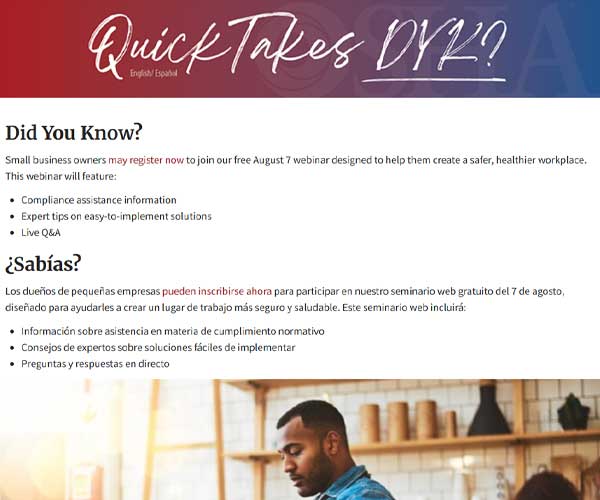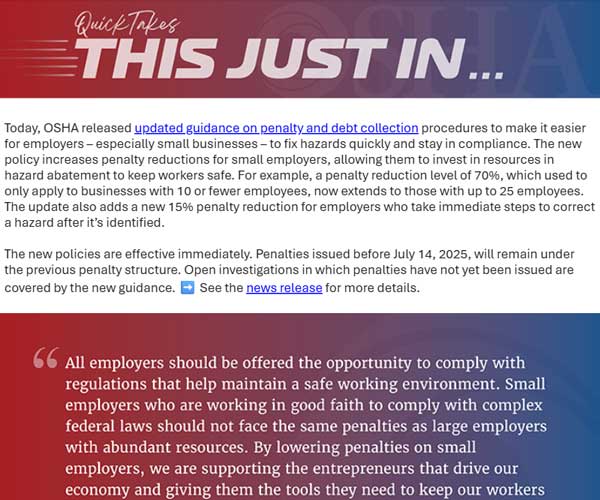Quicktakes Newsletter Series

Like this information?
Subscribe to stay connected.
QuickTakes

Monthly newsletter featuring compliance assistance, training and other workplace safety and health resources.
Información Rápida

Boletín mensual que ofrece asistencia en materia de cumplimiento, capacitación y otros recursos de seguridad y salud en el lugar de trabajo.
DYK?

Short, informative bulletin spotlighting timely workplace safety events and resources/Boletín breve e informativo que destaca eventos y recursos importantes sobre seguridad en el lugar de trabajo.
Past Issues/Ediciones anteriores
2025
| Issue |
|---|
| September 22, 2025 |
| August 20, 2025 |
| July 21, 2025 |
| June 18, 2025 |
| May 19, 2025 |
| April 21, 2025 |
| April 2, 2025 |
| January 16, 2025 |
2024
2023
2025
2024
2023
2025
| Issue |
|---|
| 22 de septiembre, 2025 |
| 20 de agosto, 2025 |
| 21 de julio, 2025 |
| 18 de junio, 2025 |
| 19 de mayo, 2025 |
| 21 de abril, 2025 |
| 2 de abril, 2025 |
| 16 de enero, 2025 |
2024
2023
2025
| Issue |
|---|
| July 14, 2025 |


